#kazuo kitamura
Explore tagged Tumblr posts
Text

#movies#polls#the man who stole the sun#man who stole the sun#70s movies#kazuhiko hasegawa#kenji sawada#bunta sugawara#kimiko ikegami#kazuo kitamura#shigeru kōyama#requested#have you seen this movie poll
68 notes
·
View notes
Text


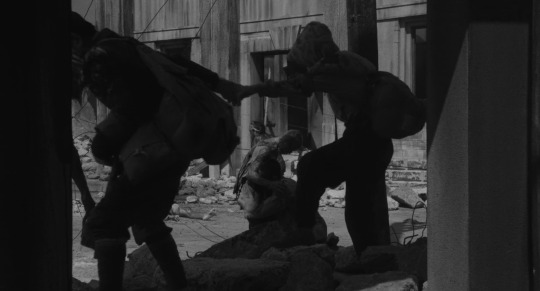
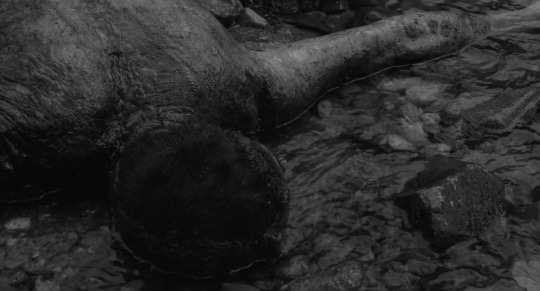


Black Rain | 黒い雨 (1989) dir. Imamura Shōhei
#movie stills#cinematography#film stills#japanese cinema#based on novel#masuji ibuse#black rain#kuroi ame#黒い雨#80s#shohei imamura#今村 昌平#井伏 鱒二#tanaka yoshiko#kitamura kazuo#drama#ww ii
14 notes
·
View notes
Text
Oc art dump!!
The background sucks ass lol









#my oc stuff#oc chart#fuuto kitamura#kazuo okamoto#ace of spades#kyo orikawa#ryunosuke komatsu#yuuto oshiro#akitomo kojima#tagging all my oc namesss 😭😭💕💕💕#snowball maltese
5 notes
·
View notes
Photo

Bad movie I have Sailor Suit & Machine Gun aka Sêrâ-fuku to kikanjû 1981
#Sailor Suit & Machine Gun#Kadokawa Haruki Jimusho#Hiroko Yakushimaru#Tsunehiko Watase#Rentarô Mikuni#Yuki Kazamatsuri#Kazuo Kitamura#Akira Emoto#Masaaki Daimon#Makoto Satô#Minori Terada#Kamatari Fujiwara#Kazuo Amuro#Yôko Amuro#Seiko Fujiki#Sumiyo Hasegawa#Shinpei Hayashiya#Masamitsu Hirota#Daisuke Iijima#Hisashi Imai#Shintarô Ishikawa#Yûdai Ishiyama#Chiaki Kojo#Yôko Kurita#Hiroshi Madoka#Ken Mitsuishi#Tatsuya Oka#Kôen Okumura#Yôsuke Saitô#Toshiya Sakai
2 notes
·
View notes
Photo

役者人生・本日も波瀾万丈 北村和夫 近代文芸社
4 notes
·
View notes
Photo


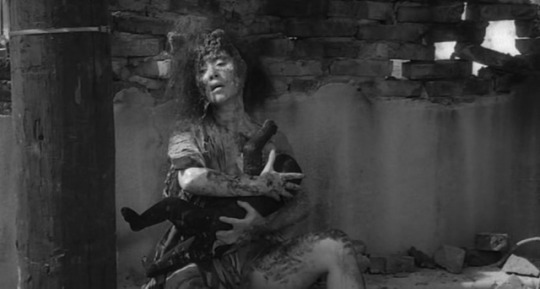




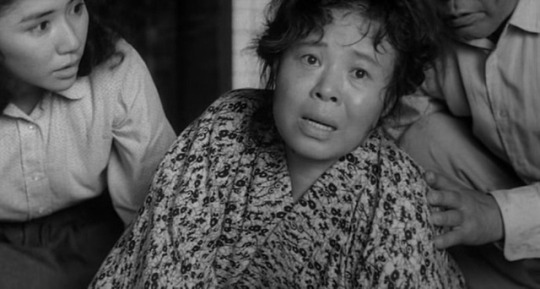


Black Rain / Kuroi ame (1989, Shōhei Imamura)
黒い雨 (今村昌平)
8/15/18
#80s#Black Rain#Shohei Imamura#Japanese#Yoshiko Tanaka#Kazuo Kitamura#Etsuko Ichihara#Shoichi Ozawa#Norihei Miki#Taiji Tonoyama#drama#Hiroshima#bomb#nuclear#terminal illness#village#small town#marriage#mental illness#fish#black and white#Toru Takemitsu#Japan Academy Prize winner
7 notes
·
View notes
Photo










Warm Water Under a Red Bridge | Shôhei Imamura | 2001
#Shôhei Imamura#Imamura#Warm Water Under a Red Bridge#2001#Kôji Yakusho#Misa Shimizu#Mitsuko Baisho#Kazuo Kitamura
88 notes
·
View notes
Text
PLUS...ACTORS PROFILES #6


Name: JUN MATSUMOTO
Nickname: MATSUJUN
Birthdate: August 30, 1983 [VIRGO]
Nationality: Japanese
Born: Toshima, Tokyo Japan
Career: ACTOR ▪︎ SINGER ▪︎ DANCER ▪︎ MODEL ▪︎
RADIO HOST ▪︎ CONCERT DIRECTOR
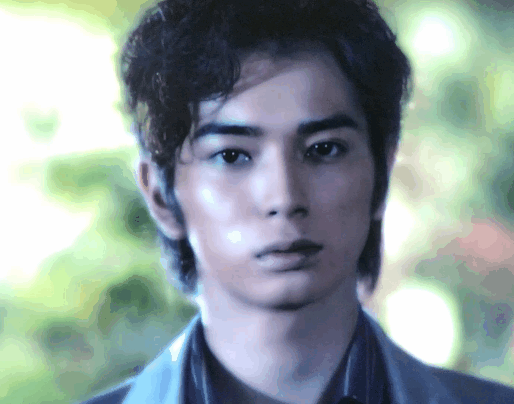
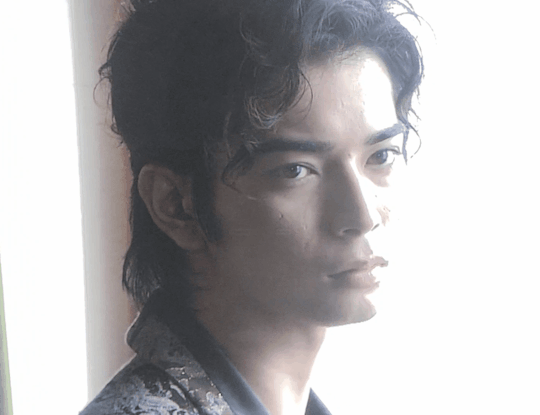
Notable Roles:
Debut Role: Teddy in STAND BY ME in 1997
Stage Work:
Bernardo in West Side Story (2004)
Carl Trask in East of Eden (2005) Leading Role
Sasuke Kuhibi in Byakuya no Valkyrie (2006) Lead
Shinji Shinjuku in Aa, Kōya (2011) Lead Role
TV Work:
Shunichi Yoneda in Hoken Chosa-in Shigarami Taro no Jikenbo (1997 TV Special)
Mori in Bokura no Yuki Miman Toshi (1997)
Tōru Kitamura in Another Heart (1997)
Yu in BOYS BE Jr. (1998)
Takuji Ohno in Hitsuyo no Nai Hito (1998)
Retsu Nikaido Kosuke Fukunaga in Nekketsu Ren'ai-do (1999)
S in Kowai Nichiyobi: Furugiya (1999)
Himself in V no Arashi (1999)
Yusuke in Shijo Saiakun no Deto (2000)
Hajime Kindaichi in Kindaichi Shonen no Jikenbo 3 (2001)
Shin Sawada in Gokusen/Gokusen Returns (2002)
Shin Sawada in Yoika no Mikata/Gokusen SP (2003)
Momo/Takeshi Goda in Kimi wa Petto (2003)
Sato Kosuke in Propose (2005)
Domyouji Tsukuba in Hana Yori Dango (2005)
Takada Kazuo in Yonimo Kimyona Monogatari (2006)
Domyouji Tsukuba in Hana Yori Dango Returns (2007)
Shogo Ban in Bambino (2007) Lead Role
Hayato Yamaguchi in Myu no Anyo Papa ni Ageru (2008)
Vito Hayakawa in Smile (2009)Lead Role
Nozomu Goto in Saigo no Yakusoku (2010)
Yoshio Yame in Wegaya no Rekishi (2010)
Kaibutsu-kun Butler in Kaibutsu-kun (2010)
Taiga Kusunoki in Natsu no koi wa Nijiiro ni Kagayaku (2010) Lead Role
Himself in Bartender (2011) Guest Appearance
Shuntaro Tokita in Mou Yuukai Nante Shinai (2012)
in Lucky Seven (2012)
in Lucky Seven SP (2013)
Wataru in Hajimari no Uta SP (2013)
Sota Koyurugi in Shitsuren Chocolatier (2014)
Hiroto Miyama in 99.9 Criminal Lawyer (2016)
Mori Eguchi in Bokura no Yuki: Miman Toshi SP (2017)
Hiroto Miyama in 99.9 Criminal Lawyer Season 2 (2018)
Domyouji Tsukuba in Hana Nochi Hare~Hanadan Next Season (2018) Guest Appearance Episode 1
Takeshiro Matsuura in Eien Nishipa~Hokkaido to Nazuketa Otoko Matsuura Takeshiro Kara (2019)
Chikara Nakagoshi in Tonari no Chikara (2022)
Tokugawa Ieyasu in Dosuru Ieyasu (2023)

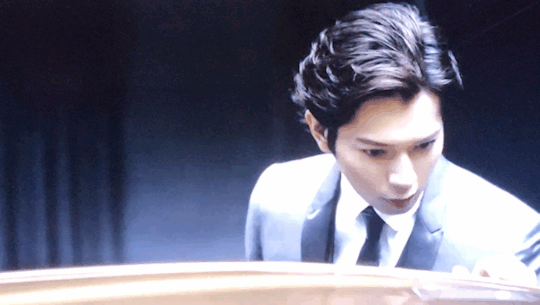

Roles in Films or Movies:
1998 in SHINJUKU SHONEN TANTEIDAN as Kentaro Kanzaki
2002 in PIKANCHI LIFE IS HARD DAKEDO HAPPY as Rentaro Futaba (Bon)
2004 in PIKANCHI LIFE IS HARD DAKARA HAPPY as Rentaro Futaba (Bon)
2005 in TOKYO TOWER as KOJI
2007 in BOKU WA IMOTO NI KOI O SURU as Yori Yuki
2007 in KIIROI NAMIDA as Yuji Katsumada
2008 in KAKUSHI TORIDE NO SAN'AKUNIN: THE LAST PRINCESS
2008 in HANA YORI DANGO FINAL as Domyouji Tsukuba
2013 in GIRL IN A SUNNY PLACE (HIDAMARI NO KANOJO) as Okuda Kosuke
2014 in PIKANCHI LIFE IS HARD TABUN HAPPY as Rentaro Futaba (Bon)
2017 in NARRATAGE as TAKASHI HAYAMA
2021 in 99.9 CRIMINAL LAWYER: THE MOVIE as Hiroto Miyama
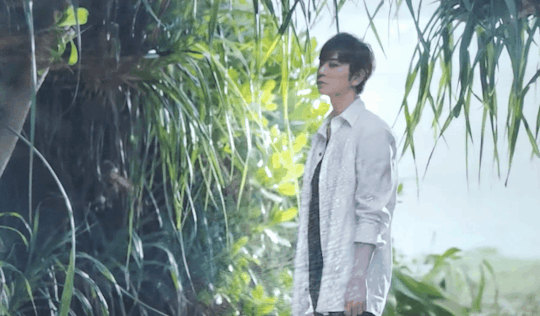
An actor of stage, television as well as movies does not keep this man busy enough he is also in a boy band ARASHI (since 1999) and he serves them as concert production since 2000 as well as other singers but mainly his own group. Also a concert director.
He has done several commercials as well including KFC JAPAN, NINTENDO, KIKKOMAN & HATACHI to name a few.
I came to know of Jun Matsumoto as Domyouji Tsukuba in the Hana Yori Dango Series and Movie Finale. He also took on the role a 4th time in a new generation version of the story called Hana Nochi Hare.
This guy has talent like crazy and very handsome. He doesn't seem to be stopping. Which his fans love I'm sure. And ARASHI is definitely fun to watch. They look like they're having so much fun. Plus the members of the group have also acted with him in movies and series.
@pose4photoml
#ACTORS PROFILES 6#GIFS by ME#JAPANESE#ACTOR#SINGER#DANCER#HOST OF TV & RADIO#DOMYOUJI TSUKUBA#HANA YORI DANGO#HANDSOME#ENERGETIC#ARASHI#JOHNNY & ASSOCIATES
28 notes
·
View notes
Text
BOOKS READ IN 2022
Here’s the complete list of books I managed to read in 2022.
168 books. 54,494 pages.
Renata Adler- Speedboat
Kendra Allen- The Collection Plate
Jonathan Alter- His Very Best: Jimmy Carter, A Life
Kenneth Anger- Hollywood Babylon
Jason Bailey- Fun City Cinema: New York City and the Movies That Made It
Peter Baker, Susan Glasser- The Divider: Trump in The White House 2017-2021
JG Ballard- The Atrocity Exhibition
Julien Barnes- Elizabeth Finch
Brit Bennett- The Vanishing Half
Charles M. Blow- The Devil You Know: A Black Power Manifesto
Anthony Bourdain- Medium Raw
Anthony Bourdain, Laurie Woolever- World Travel: An Irreverent Guide
Box Brown- Cannabis: The Illegalization of Weed in America
Mariah Carey, Michaela Angela Davis- The Meaning of Mariah Carey
Nick Cave & Sean O’Hagan- Faith, Hope, and Carnage
David Chang- Eat a Peach
Dan Charnas- Dilla Time
Leonard Cohen- A Ballet of Lepers
Lee Cole- Groundskeeping
Teju Cole- Black Paper
Ray Connolly- Being Elvis: A Lonely Life
Brian Contoir- Practical Alchemy
Antoine Cosse- Metax
Charles R. Cross- Here We Are Now: The Lasting Impact of Kurt Cobain
Daniele Cybulskie- How To Live Like a Monk
Travis Dandro- King of King Court
John Darnelle- Devil House
Michael Deforge- Heaven No Hell
Rita Dove- Playlist for the Apocalypse
David Duchovny- The Reservoir
Jennifer Egan- The Candy House
Robert Evans- The Kid Stays in The Picture
Scott Eyman- Cary Grant: A Brilliant Disguise
Nicolas Ferraro- Cruz
Mark Fisher- Ghosts of My Life
Mark Fisher- Capitalist Realism
Johnathan Franzen- Crossroads
Harry Freedman- Leonard Cohen: The Mystical Roots of Genius
Matti Friedman- Who By Fire: Leonard Cohen in the Sinai
James Gavin- George Michael: A Life
Lizzy Goodman- Meet Me in The Bathroom
Andrew Sean Greer- Less
Dave Grohl- The Storyteller: Tales of Life and Music
Joseph Hansen- Troublemaker
Joy Harjo- Poet Warrior
Robert Harris- The Ghost Writer
Noah Hawley- Anthem
Wil Haygood- Colorization: One Hundred Years of Black Film in a White World
Clinton Heylin- The Double Life of Bob Dylan
Andrew Holleran- The Kingdom of Sand
Michel Houellebecq- Serotonin
Sean Howe- Marvel Comics: The Untold Story
Dorthy B Hughes- In a Lonely Place
John Irving- The Fourth Hand
Walter Isaacson- Leonardo Da Vinci
Kazuo Ishiguro- Klara and The Sun
Junji Ito- No Longer Human
Robert Jones Jr- The Prophets
Saeed Jones- Alive at The End of the World
Stephen Graham Jones- My Heart is a Chainsaw
Rax King- Tacky
Stephen King- Billy Summers
Katie Kitamura- Intimacies
Chuck Klosterman- The Nineties
TJ Klune- Under The Whispering Door
Karl Ove Knausgaard- The Morning Star
Hideo Kojima- The Creative Dream
Milan Kundera- Slowness
Wally Lamb- I Know This Much is True
Yiyun Li- Dear Friend, from My Life I Write to You in Your Life
Thomas Ligotti- The Conspiracy Against The Human Race
Roger Lipsey- Make Peace Before the Sun Goes Down
Patricia Lockwood- No One is Talking About This
Ling Ma- Bliss Montage
Stuart B MacBride- Halfhead
Michael Mann & Meg Gardiner- Heat 2
Greil Marcus- Dead Elvis
Mike McCormack- Solar Bones
Jennette McCurdy- I’m Glad My Mom Died
Janelle Monae- The Memory Librarian
Ottessa Moshfegh- Lapvona
Leila Mottley- Nightcrawling
Alan Moore, Melinda Gebbie- Lost Girls
Grant Morrison- The Invisibles
Mannie Murphy- I Never Promised You a Rose Garden
Sequoia Nagamatsu- How High We Go in The Dark
Joyce Carol Oates- Blonde
Joyce Carol Oates- American Melancholy
John O’Connell- Bowie’s Bookshelf
Ryan O’Connell- Just By Looking at Him
Jenny Offill- Weather
Paul Ortiz- An African American and Latinx History of The United States
Hiroko Oyamada- The Factory
Hiroko Oyamada- The Hole
Helen Oyeymi- What is Not Yours is Not Yours
James Patterson- Hear No Evil
Larissa Pham- Pop Song
Brian Phillips- Impossible Owls
Stephanie Phillips- Why Solange Matters
Keith Phipps- Age of Cage
Michael Pollan- This Is Your Mind on Plants
Richard Powers- Bewilderment
Questlove- Music is History
Kristen Radtke- Seek You
Sue Rainsford- Follow Me to Ground
Claudia Rankine- Just Us: An American Conversation
George A Romero, Daniel Kraus- The Living Dead
Karen Russell- Orange World
George Saunders- A Swim in a Pond in The Rain
George Saunders- Liberation Day
Samantha Schweblin— Fever Dream
Leonardo Sciascia- Equal Danger
Mark Seal- Leave The Gun, Take The Cannoli
Seth- Clyde Fans
Alan Sepinwall- Breaking Bad 101
Zadie Smith- Feel Free
Won-Pyung Sohn- Almond
Bob Spitz- Led Zeppelin: The Biography
Elizabeth Strout- Oh William!
J Randy Taraborrelli- The Secret Life of Marilyn Monroe
Herve Le Tellier- The Anomaly
Manjit Thapp- Feelings
Olga Tokarczuk- The Books of Jacob
Jia Tolentino- Trick Mirror: Reflections on Self Delusion
Leo Trezenick- The Confession of a Mad Man
Stanley Tucci- Taste
Una- Becoming Unbecoming
Ocean Vuong- Time is a Mother
Chris Ware- Rusty Brown
WC Ware- Jimmy Corrigan
John Waters- Liarmouth
Peter Weiss- The Shadow of The Coachman’s Body
Missouri Williams- The Doloriad
Antoine Wilson- Mouth to Mouth
Sarah Winman- Still Life
Laurie Wollever- Bourdain: The Definitive Oral Biography
Kenneth Womack- Solid State: The Story of Abbey Road and The End of The Beatles
Hanya Yanagihara- To Paradise
Ed. Jelani Cobb & David Remnick- The Matter of Black Lives
Ed. Sinead Gleeson & Kim Gordon- This Woman’s Work: Essays on Music
5 notes
·
View notes
Photo


MARY’S CATALOG PICKS!
MY ABSOLUTE DARLING
A SEPARATION
WOMAN NO. 17
LINCOLN IN THE BARDO
NEVER LET ME GO
#MY ABSOLUTE DARLING#GABRIEL TALLENT#RIVERHEAD#A SEPARATION#KATIE KITAMURA#WOMAN NO. 17#EDAN LEPUCKI#HOGARTH#LINCOLN IN THE BARDO#GEORGE SAUNDERS#RANDOM HOUSE#NEVER LET ME GO#KAZUO ISHIGURO#VINTAGE
2 notes
·
View notes
Text

Sumiko Sakamoto and Shoichi Ozawa in The Pornographers (Shohei Imamura, 1966)
Cast: Shoichi Ozawa, Sumiko Sakamoto, Keiko Sagawa, Haruo Tanaka, Ganjiro Nakamura, Masaomi Kondo, Ichiro Sugai, Kazuo Kitamura. Screenplay: Shohei Imamura, Koji Numata, based on a novel by Akiyuki Nosaka. Cinematography: Shinsaku Himeda. Art direction: Hiromi Shiozawa, Ichiro Takada. Film editing: Mutsuo Tanji. Music: Toshiro Kusunoki, Toshiro Mayuzumi.
Fascinating. confusing, sometimes funny, and sometimes just a little repellent. Must be a Shohei Imamura film. I don't shock easily, but Imamura always keeps me on the edge of being shocked, mostly because I don't know how far he'll go next. In The Pornographers, we're dealing not only with the title subject but also with incest and prostitution and even abuse of the mentally challenged, while desperately trying to sort out the very confused life of Subuyan Ogata (Shoichi Ozawa). He is one of the pornographers of the title, and he lives with a widow, Haru (Sumiko Sakamoto), who thinks her dead husband has been reincarnated as the carp she keeps in a very confining fish tank. She has two nearly grown children: Koichi (Masaomi Kondo), who seems uncommonly attached to his mother, and Keiko (Keiko Sagawa), a rebel without a cause. Ogata is obsessed with Keiko, whom he has known since she was a little girl. Nothing good is going to come out of his relationship with the Matsuda family, of course, especially after Haru gets pregnant and goes insane. But figuring out the ins and outs of the film's plot, and even whether what we're watching is flashback or dream or fantasy is part of the essence of its fascination -- and its repellent quality. Imamura isn't quite like any filmmaker I know of.
4 notes
·
View notes
Text


Yukio Mishima, quem diria, era fissurado por OVNIs
Yukio Mishima estava entre os membros famosos da Japan Flying Saucer Research Association, fundada por Kinichi Arai em 1955 para pesquisar OVNIs
Texto traduzido, adaptado e aumentado por Cláudio Suenaga a partir do artigo "Japón y los ovnis (2): Mishima Yukio y la Asociación Japonesa para la Investigación de los Platillos Volantes", de Itakura Kimie, publicado no site nippon.com
"O verão, e com ele a temporada de discos voadores, está quase chegando. No verão passado, levei meus binóculos para o Atami Hotel e olhei para o céu todas as noites na esperança de ver os chamados OVNIs chegando à Terra. No entanto, no final, não tive a sorte de presenciar tal evento.”
Esta é a abertura de um ensaio que o célebre escritor Yukio Mishima (1925-1970) escreveu em 1957 para a Uchuuki (Astronave), a publicação oficial da Japan Flying Saucer Research Association (JFSA). Mishima, que desejava ver uma nave alienígena, juntou-se à organização logo no ano seguinte à sua fundação em 1955 por Kinichi Arai, um pioneiro da ufologia japonesa.
A JFSA chegou a ter mais de 1000 membros e além de Mishima, contou com outros expoentes como os escritores Hoshi Shinichi (1926-1997), Ishihara Shintarō (1932-2022), que também foi político, e Nitta Jirō (1912-1980); o principal pioneiro na pesquisa e desenvolvimento de foguetes e do programa espacial japonês, Itokawa Hideo (1912-1999); e o compositor Mayuzumi Toshiro (1929-1997).
Em junho de 1957, Mishima participou de uma vigília em Hibiya, um bairro de Chiyoda Ward, em Tóquio, e naquele verão ele saiu à caça de OVNIs durante uma viagem aos Estados Unidos, que vivia então a febre dos contatados. Arai escreveu um artigo dizendo que Mishima era um membro entusiasmado da associação e sempre aparecia em eventos com um enorme telescópio.
Mishima escreveu um artigo para a revista Fujin Kurabu (Women's Club) sobre um objeto semelhante a um OVNI em forma de charuto que ele viu com sua esposa do telhado de sua casa em Ōta, uma região especial da Metrópole de Tóquio, em 23 de maio de 1960. Entretanto, Mishima tinha dúvidas se isso o que ele viu era realmente um autêntico OVNI, pois em um artigo que escreveu ao jornal Asahi Shimbun em homenagem ao dramaturgo e entusiasta de discos voadores Kitamura Komatsu (nascido em 1901) após sua morte em 1964, ele disse: “Embora eu não tenha conseguido ver um disco voador, gostei da preciosa experiência de pura amizade”.
Em seu romance Utsukushii Hoshi (A Beautiful Star, 美しい星), publicado em 1962 (Showa 37), época de intensificação da Guerra Fria entre Oriente e Ocidente, Mishima conta a história de uma família de quatro pessoas - o pai Jūichirō Osugi, a mãe Iyoko, o filho Kazuo e a filha Akiko - que avista um disco voador e passa então cada qual a acreditar que provém de quatro planetas diferentes: o pai que é de Marte, a mãe que é de Júpiter, o filho que é de Mercúrio, e a filha que é de Vênus. Jūichirō trabalha como meteorologista, Iyoko se junta a um esquema de pirâmide vendendo água, Kazuo é um mensageiro de bicicleta e Akiko é uma estudante universitária com um complexo sobre sua beleza. Eles se esforçam para construir um movimento de paz para salvar a humanidade da aniquilação e da guerra nuclear, enquanto enfrentam um grupo antagônico de alienígenas que procura acabar com os humanos.

Este livro que reflete o fascínio de Mishima por OVNIs e alienígenas, sempre foi obliterado pelos literatos e estudiosos de sua obra, que jamais procuraram conhecer melhor essa sua faceta um tanto inusitada e destoante de tudo o que o tornou conhecido como o mais ocidentalizado e ao mesmo tempo o mais japonês dos escritores nipônicos do século XX. Parece que é inadmissível e inaceitável, para não dizer constrangedor, que alguém tão talentoso e de tão alta cultura possa se envolver com assuntos "menores" dessa natureza.
Contudo, Mishima preferia a ficção científica aos romances policiais que andavam em alta na época, considerando-a "um conto de fadas adulto, a primeira literatura a superar completamente o humanismo moderno". Ele havia lido O Fim da Infância (1953), de Arthur Clarke (1917-2008), que descreveu como "uma obra-prima". Só para lembrar, o enredo de O Fim da Infância gira em torno de uma invasão alienígena pacífica da Terra que ocorre durante a Guerra Fria.
Durante três meses a partir de novembro de 1960 (Showa 35), Mishima viajou com a Sra . Ayako para os Estados Unidos e outros países europeus, e durante sua estada em Los Angeles, ele acompanhou a eleição do presidente Kennedy, o sucesso do satélite tripulado soviético Vostok, e em agosto a construção do Muro de Berlim.
Se Mishima acreditava em OVNIs, Arai, chefe da JFSA, mais ainda, apesar de não tê-los visto pessoalmente, e fazia esforços constantes para obter informações sobre eles. Arai nasceu em Tóquio em 1923 e operou com o radar aerotransportado da Força Aérea do Exército durante a Segunda Guerra Mundial. Ele tinha um antigo interesse em observações meteorológicas e astronômicas, bem como em aviões. Depois de um período pós-guerra no Ministério das Finanças, ele dirigiu uma livraria em Shinagawa, Tóquio, e leu muito sobre suas áreas de interesse.
Ele se deparou com a tradução japonesa de Flying Saucers Have Landed, de George Adamski (1891-1965) e Desmond Leslie (1921-2001), publicada em 1954. Arai ficou imediatamente interessado, embora céptico quanto às alegações de Adamski de que mantinha contatos com seres de Vênus. Como essas histórias e testemunhos pessoais continuaram a surgir, Arai pensou que deveria haver um lugar para discussões sérias sobre OVNIs, o que o levou a fundar a JFSA.
O objetivo final de Arai era a paz mundial e a proteção do futuro da humanidade. Ele temia que a Guerra Fria entre os blocos ocidental e oriental levasse a outro conflito global. Em 1957, a JFSA marcou os dois anos de sua fundação com uma declaração conjunta de "paz universal" com outros grupos de pesquisa. Soou como um aviso sobre como a corrida armamentista nuclear ameaçava o futuro da humanidade, ao mesmo tempo em que pedia a superação das diferenças entre estados e raças para que nos preparássemos para a chegada dos discos voadores. No mesmo ano veio um relatório de despachos estrangeiros de que a União Soviética estava se preparando para lançar um míssil nuclear em direção a Lua. A JFSA entregou ao embaixador soviético um documento pedindo o cancelamento do lançamento.
No Templo Dourado
Por Cláudio Tsuyoshi Suenaga
Yukio Mishima era o nome artístico de Kimitake Hiraoka (平岡公威), que nasceu na capital do Japão em 1925, onde teve uma infância problemática marcada por eventos que mais tarde influenciariam fortemente a sua literatura. O seu livro mais famoso é O Templo Dourado, publicado em 1956. Mesmo sendo aficionado em ufologia, nunca tinha ouvido falar que Mishima enveredara pela ficção científica e que era fissurado em OVNIs, e foi pela leitura desse romance psicológico, aliás, e depois pelo filme Mishima: A Life in Four Chapters (1985), produzido por nada menos do que Francis Ford Coppola e George Lucas e dirigido por Paul Schrader (roteirista de Taxi Driver), que Mishima e o Pavilhão Dourado se revelaram para mim.

A literatura moderna japonesa do pós-guerra passou a refletir a nova realidade sócio-política do país, e Mishima foi o maior dos renovadores. Sua universalidade, que veio a ser a tônica dos ficcionistas japoneses, sucumbiu, no plano pessoal, ao seu ultranacionalismo, ao seu apelo, em ato extremado, que se anteciparia em décadas ao extremismo ideológico e religioso que temos hoje em dia, pelo retorno às velhas tradições, enfim, ao velho Japão hermético dos xoguns, dos clãs, dos samurais e dos códigos de honra. Os japoneses, assim como Mishima, podem ter se aberto ao mundo e absorvido alguns modelos de trabalho e produção do Ocidente, mas no ambiente de trabalho, se comportam e se entregam como se ainda estivessem sob os esforços de guerra, e ao fim da jornada de cada dia, retornam para casa trazendo no espírito e nos modos a carga cultural do sistema de quartel.
Estando vivendo e trabalhando aqui em Osaka, no Japão, não podia deixar de visitar o lendário Kinkaku-ji (金閣寺), o Templo do Pavilhão Dourado, rodeado pelo Kyōko-chi (lago espelhado de água cristalina que reflete toda a beleza e exuberância do prédio, proporcionando, ao visitante, um espetáculo de rara beleza), na cidade de Quioto (fundada no século I e que foi a capital do Japão Imperial até 1868, quando foi substituída por Tóquio).
Todo o pavilhão, exceto o andar térreo, é revestido de folha de ouro puro e no telhado está uma fenghuang dourada (fênix chinesa).
O Pavilhão Dourado foi construído em 1397 para servir como local de descanso para Ashikaga Yoshimitsu (1358-1408), o terceiro xogum do Xogunato Ashikaga, que governou entre 1368 e 1394, durante o período Muromachi (regime militar feudal estabelecido por Ashikaga e controlado pelos xoguns do seu clã de 1336 à 1573). Foi o seu filho mais velho Ashikaga Yoshimochi (1386-1428) quem, atendendo ao pedido de seu pai, o converteu em um templo Zen de orientação Rinzai (uma das três escolas Zen budistas no Japão, as outras sendo a Soto e a Obaku), linha da escola chinesa Linji, fundada durante a dinastia Tang (618-906) por Linji Yixuan (falecido em 866).
Ao longo da história, durante guerras, o templo foi incendiado inúmeras vezes. Em 1950, o templo foi incendiado por um monge mentalmente perturbado, episódio ficcionado dramaticamente por Mishima em O Templo Dourado.
Fotografia pintada do Japão, datada de antes de 1886, de acordo com uma nota escrita no álbum que contém as fotografias. Autor presumido das fotografias originais: Adolfo Farsari.

Praticamente nada restou do Kinkaku-ji após o incêndio de 1950.

Mishima acabaria por seguir o gesto extremado do monge budista mentalmente perturbado que o incendiou, quando, na manhã de 25 de novembro de 1970, cometeu seppuku (suicídio ritual samurai) dentro do quartel das Forças Armadas de Tóquio em protesto ao abandono de antigos códigos de honra e tradições.
Yukio Mishima, com a mão na cintura, preste a cometer seppuku (suicídio ritual samurai) no quartel das Forças Armadas de Tóquio.

Vezes sem conta o templo teve de ser restaurado e novos revestimentos de ouro, mais espessos, tiveram de ser colocados. O que vemos, portanto, não é, obviamente, o templo original, que se de um lado ainda desperta um certo encanto, por outro deixa a impressão de que perdeu a sua “beleza espiritual”, tornando-se apenas uma atração turística para “inglês ver”, para fins lucrativos, já que há barracas e lojas por todos os lados. Ainda assim, vale a visita.



#yukio mishima#ufologia#fenomeno ovni#ovnis#discos voadores#extraterrestres#aliens#ufo phenomenon#literatura#ficção científica#science fiction#sci fi#literatura japonesa#livros#japan#kinkaku ji#golden pavilion#金閣寺
9 notes
·
View notes
Photo
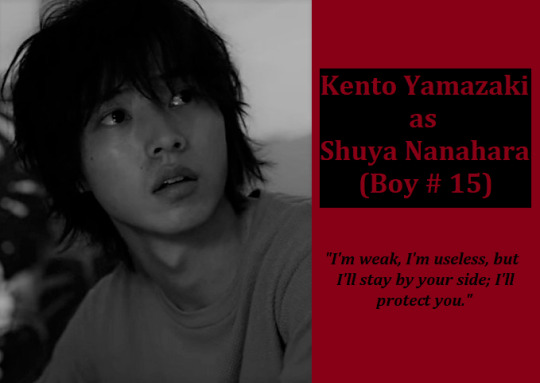
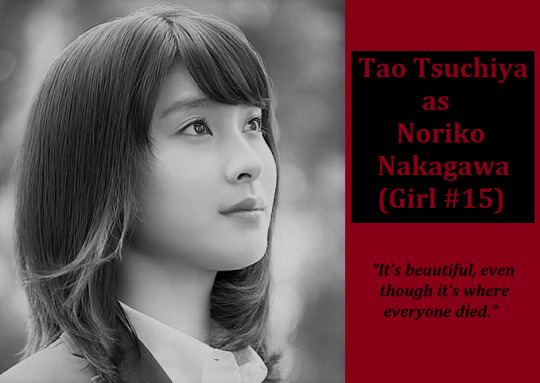

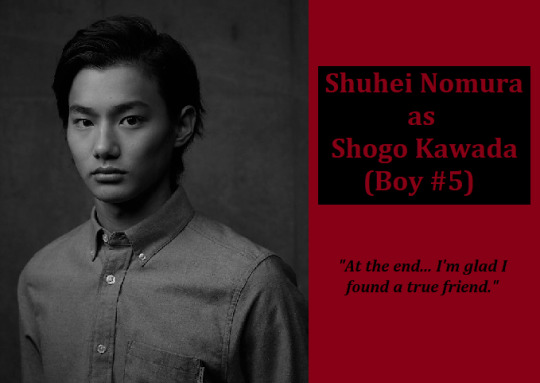
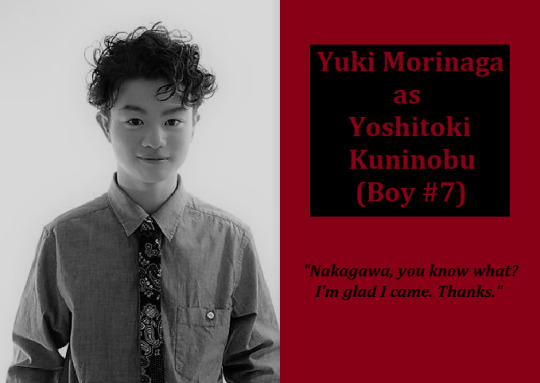


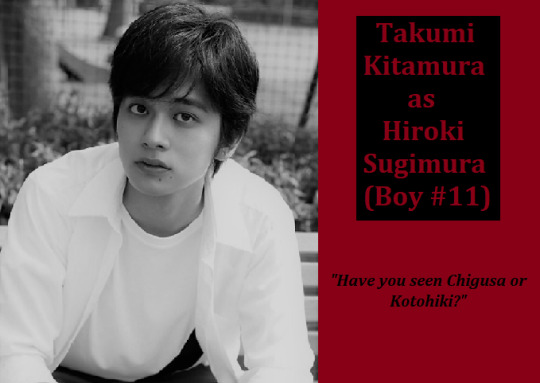


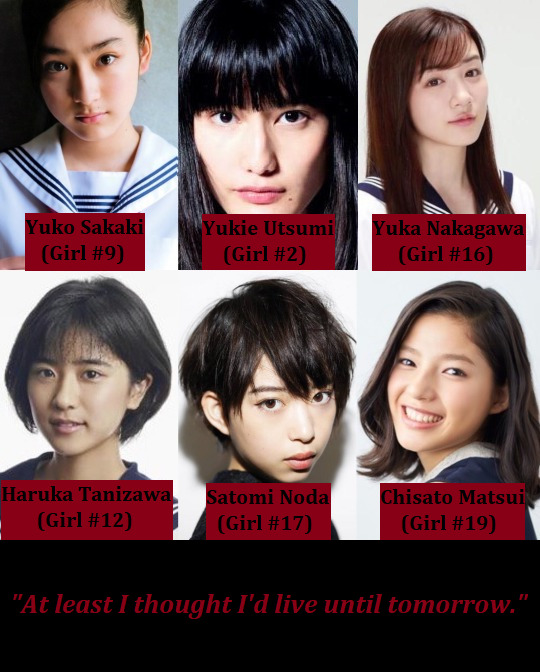
In honor of Battle Royale’s 20th Anniversary! (December 16, 2020)
Here is my dream cast if 2020 brought us a Battle Royale remake! (not every role is filled, because 42 names was a stretch and I did this last minute)
(Boy #5) Shogo Kawada - Shuhei Nomura
(Boy #6) Kazuo Kiriyama - Shotaro Mamiya
(Boy #7) Yoshitoki Kuninobu - Yuki Morinaga
(Boy #11) Hiroki Sugimura - Takumi Kitamura
(Boy #15) Shuya Nanahara - Kento Yamazaki
(Boy #16) Kazushi Niida - Kanata Hongo
(Boy #17) Mitsuru Numai - Ryota Katayose
(Boy #19) Shinji Mimura - Mackenyu
(Boy #20) Kyoichi Motobuchi - Yuta Koseki
(Girl #2) Yukie Utsumi - Ai Hashimoto
(Girl #3) Megumi Eto - Mone Kamishiraishi
(Girl #8) Kayako Kotohiki - Kanna Hashimoto
(Girl #9) Yuko Sakaki - Yuna Taira
(Girl #11) Mitsuko Souma - Elaiza Ikeda
(Girl #12) Haruka Tanizawa - Yuina Kuroshima
(Girl #13) Takako Chigusa - Maika Yamamoto
(Girl #15) Noriko Nakagawa - Tao Tsuchiya
(Girl #16) Yuka Nakagawa - Mei Nagano
(Girl #17) Satomi Noda - Aoi Morikawa
(Girl #19) Chisato Matsui - Anna Ishii
Kitano - Ryohei Suzuki
Shiori Kitano - Hana Sugisaki
Keiko Onuki - Suzu Hirose
Directed by: Takashi Miike
#yes i am kentao trash and i accept it#i'm sorry for the terrible graphics its 3am and i don't know what i'm doing#battle royale#Batoru Rowaiaru#koushun takami#nanahara shuya#noriko nakagawa#takako chigusa#mitsuko souma#shiori kitano#kazuo kiriyama#shogo kawada#yoshitoki kuninobu#hiroki sugimura#shinji mimura#ryota katayose#mackenyu#yuta koseki#ai hashimoto#mone kamishiraishi#kanna hashimoto#yuna taira#elaiza ikeda#yuina kuroshima#maika yamamoto#tao tsuchiya#kentao#mei nagano#aoi morikawa#anna ishii
109 notes
·
View notes
Text
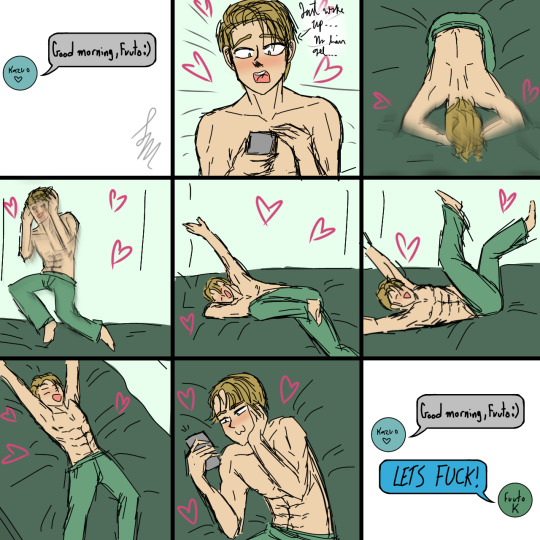
Yeah yeah, another oc post I know..
Indulge me >:(
Fuuto without hair gel is something I love and hate..
Inspired by:

Also inspired by this post-
#my ocs#ocs#oc stuff#fuuto kitamura#kazuo okamoto#kitamoto#oc brainrot#please forgive the mess#I drew this with my finger in like half an hour at 12am#your fudanshi is showing!#your fudanshi is showing
8 notes
·
View notes
Text
Key's 1st Crossover TV Anime KAGINADO Announces Its Premiere Date of October 12
KAGINADO is Key's first crossover anime project featuring the main characters from its popular game/anime series, such as Kanon, AIR, CLANNAD, Little Busters!, and Rewrite. The TV anime's official website has opened to announce its premiere date of October 12, 2021, and main voice cast members.
While most of the voice cast memres will be reprising their characters from the games and anime, Misuzu Kamio from AIR will be newly voiced by Asami Sanada, because the character's original cast Tomoko Kawakami passed away in 2011.
Sanada says, "When I was asked to join an audition, I remembered Kawakami-san from our time together on the radio and in anime. I admired the way she could play any role with ease and cheerfully pull us together! I felt the work and the role were able to reach the hearts of the viewers because she was such a wonderful person. I got goosebumps when I was informed that I had been chosen for the role, and even as I write this comment, I feel again the size of the role and the responsibility. I will once again firmly hold on to what I felt I wanted to cherish, and I will firmly carry on Misuzu that Kawakami-san carefully spun!"
"KAGINADO" story introduction:
The Private Kaginado Academy. This is a demon-infested place where the legendary warriors of the world have gathered..., or rather, an utopia where they have squeezed out more tears than the total amount of water in Lake Biwa (estimated) from Key fans around the world for over 20 years. The goal of the Kirahoshi, who couldn't get enough of the fans' tear glands and have finally broken down the walls of the world and gathered together, is to enjoy a new school life in a new world. Free, joyful, and happy in every way. A dreamlike story begins.
Key visual:
Scene visuals:
Main voice cast:
From "Kanon":
Yuichi Aizawa: Tomokazu Sugita
Ayu Tsukimiya Yui Horie
Nayuki Minase: Mariko Kouda
Mai Kawasumi: Yukari Tamura
Misaka Shiori: Akemi Sato
Sawatari Makoto: Mayumi Iizuka
From "AIR"
Yukito Kunisaki: Daisuke Ono
Mizuzu Kamio: Asami Sanada
Kano Kirishima: Sara Takeda
Minagi Tono: Ryoka Yuzuki
From "CLANNAD"
Tomoya Okazaki: Yuichi Nakamura
Nagisa Furukawa: Mai Nakahara
Kyo Fujibayashi: Ryo Hirohashi
Ryo Fujibayashi: Akemi Kanda
Tomoyo Sakagami: Houko Kuwashima
Fusako Ibuki: Ai Nonaka
Kotomi Ichinose: Mamiko Noto
Yohei Sunohara: Daisuke Sakaguchi
From "Little Busters!"
Riki Naoe: Yui Horie
Rin Natsume: Tomoe Tamiyasu
Kyosuke Natsume: Hikaru Midorikawa
Masato Inohara: Nobutoshi Kanna
Kengo Miyazawa: Yusei Oda
Komari Kamikita: Natsumi Yanase
Haruka Saigusa: Keiko Suzuki
Yuiko Kurugaya: Ryoko Tanaka
Mio Nishizono: Shiho Kawaragi
From "Rewtite"
Kotaro Tennoji: Masakazu Morita
Kotori Kanbe: Chiwa Saito
Chihaya Ohtori: Saya Shinomiya
Akane Senri: Eri Kitamura
Shizuru Nakatsu: Keiko Suzuki
Lucia Konohana: Risa Asaki
Kagari: Kana Hanazawa
Yumemi Hoshino: Keiko Suzuki
Main staff:
Original Story: VISUAL ARTS/Key
Director: Kazuya Sakamoto
Series composition: Takashi Aoshi
Screenplay: Takashi Aoshi, Kai, Touya Okano
Character Design: Eriko Haga
Prop Design Kazunari Araki
Art Director: Yukihiro Shibuya
Color Design: Asami Kitsukawa
Director of photography: Tomoaki Suzuki
Editing: Kazuo Kajiya
Sound director: Akane Maeda
Sound production: Tohokushinsha
Music production: VISUAL ARTS/Key
Animation production: Liden Film Kyoto Studio
Source: Bushiroad press release
©VISUAL ARTS/Key/KAGINADO
By: Mikikazu Komatsu
2 notes
·
View notes
Photo







Black Rain | Shôhei Imamura | 1989
Etsuko Ichihara, Yoshiko Tanaka, Kazuo Kitamura
72 notes
·
View notes